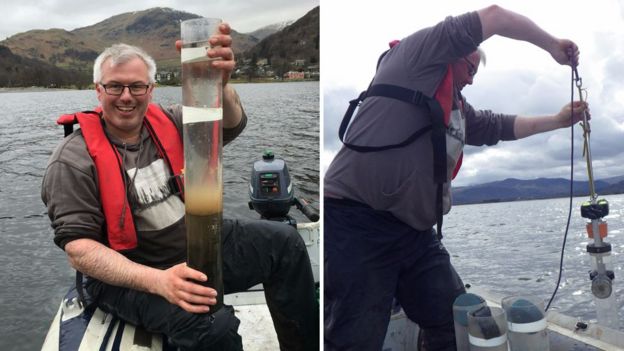
ENVIRONMENT AGENCY To understand what could happen in the future requires some knowledge of what happened in the past
Any plan to protect homes and businesses from flooding has to understand the scale of the problem being confronted.
Key questions are: "How often will it flood, and how big will the events be?"
Engineers can then design and build the defence infrastructure suitable to the task.
In the modern era, we've relied on records of precipitation and river flow to help gauge flood risk.
But this is problematic because our data on rainfall only goes back a couple of hundred years in a few locations, and good measurements of river flows are shorter still - just a matter of decades.
That is really too short to capture the full range of possibilities in terms of flood frequency and magnitude.
It is why the National Flood Resilience Review published on Thursday wants to see greater use of "information from historic sources (for example newspaper reports, photographs, and sediments)".
This is work done by the likes of Richard Chiverrell, David Sear, Jeff Warburtonand Daniel Schillereff (Liverpool, Southampton, Durham, Kings College London universities).
The team has been studying the sediments in four lakes in Cumbria.

RICHARD CHIVERRELL Richard Chiverrell's group studies the sediments in four lakes
In amongst their typically fine-grained brown bottom-muds are numerous layers of sand.
This is the material washed into the lakes whenever there is a colossal downpour, such as that delivered by Storm Desmond last December and which brought misery to Cumbria.
The size of the sand grains is related to the magnitude of a flood: a bigger event will have the energy to carry larger particles.
The team has a lot of confidence in its methods - for both flood magnitude and frequency.
Back in December, the group happened to have sediment traps in place on Brotherswater to see how Desmond washed material into the lake.
The scientists saw precisely how the flood plume, with its load of sand, entered the main body of water and then settled out.
"It was very important because it allowed us to test that the sediment record that we've been interpreting as a flood really is a flood," Prof Chiverrell said.
In amongst their typically fine-grained brown bottom-muds are numerous layers of sand.
This is the material washed into the lakes whenever there is a colossal downpour, such as that delivered by Storm Desmond last December and which brought misery to Cumbria.
The size of the sand grains is related to the magnitude of a flood: a bigger event will have the energy to carry larger particles.
The team has a lot of confidence in its methods - for both flood magnitude and frequency.
Back in December, the group happened to have sediment traps in place on Brotherswater to see how Desmond washed material into the lake.
The scientists saw precisely how the flood plume, with its load of sand, entered the main body of water and then settled out.
"It was very important because it allowed us to test that the sediment record that we've been interpreting as a flood really is a flood," Prof Chiverrell said.

No comments:
Post a Comment